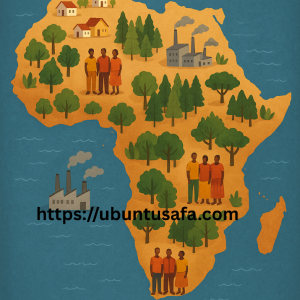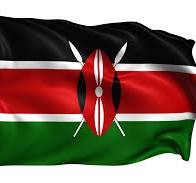Kenya Political Divisions: The political landscape is often characterized by ethnic and regional divisions, with some protests being reframed through an ethnic lens.

Kenya's political landscape is indeed deeply shaped by ethnic and regional divisions, a legacy that traces back to the colonial era and has been consistently exploited by politicians. While the recent "Gen Z" protests in June 2025 have notably cut across some of these traditional lines, attempts by the government to reframe the dissent through an ethnic lens highlight the persistent challenge.

Ethnic and Regional Divisions as a Political Tool-
Kenya is home to over 42 distinct ethnic groups. Historically, political power has largely been concentrated in the hands of a few dominant groups. Since independence in 1963, the presidency has primarily been held by individuals from the Kikuyu and Kalenjin ethnic groups. The 2010 constitution aimed to reduce the salience of ethnicity through devolution and other reforms, but politicization of ethnicity at the national level continues to impede effective representation and meaningful policy debates.
-
Colonial Legacy: The British colonial administration's arbitrary demarcation of boundaries based on cultural and linguistic lines contributed to the solidification of ethnic identities as political units.
-
Patronage and Exclusion: Successive governments, from Jomo Kenyatta's in 1963 onwards, perfected the use of ethnicity to channel patronage and benefits, often at the expense of other groups. This has fostered a sense of exclusion and resentment among marginalized communities. For instance, Kenyatta's regime was characterized by a heavy concentration of political and economic power within the Kikuyu community, leading to the entrenchment of ethnic patronage systems.
-
Election Dynamics: Ethnic affiliation has historically been the most salient organizing principle in Kenyan elections. This has often led to "ethnicized politics" that contribute to violence, particularly around election periods, as seen in the 2007-08 Post-Election Violence which had significant inter-ethnic dimensions. While the 2022 presidential election saw some voters from Kikuyu strongholds vote for the Kalenjin William Ruto over the Kikuyu candidate endorsed by then-President Uhuru Kenyatta, indicating a potential shift, the underlying ethnic dynamics remain influential.
Reframing Protests Through an Ethnic Lens-
In the wake of the June 2025 protests, there have been accusations that pro-government politicians are attempting to reframe the widespread youth-led demonstrations, which have largely transcended ethnic and regional boundaries, through an ethnic lens. For example, some pro-government figures have suggested that the protests are orchestrated by former Deputy President Rigathi Gachagua (who was impeached in October 2024 and has since become a vocal critic of the government), to advance narrow regional (specifically the Central or Mount Kenya region) and ethnic (Kikuyu) interests. This is an "all-too-familiar script in Kenyan politics" where attempts are made to attribute broad-based dissent to specific ethnic or regional agendas, thereby attempting to delegitimize the widespread grievances.
However, the nature of the "Gen Z" protests, largely organized through social media platforms like WhatsApp, Telegram, and X, has demonstrated a significant ability to cut across traditional ethnic and regional divides. These protests have been united by common concerns over police brutality, authoritarian rule, economic austerity, and the soaring cost of living, rather than specific ethnic grievances. Protests in June 2025 were reported in at least 27 of Kenya's 47 counties, indicating a nationwide character that transcends traditional strongholds of any single ethnic group.
Co-opting Opposition and Tightening Grip on Power-
The current administration under President William Ruto has faced accusations of tightening its grip on power and undermining democratic checks and balances. This includes:
-
Co-opting Opposition Elements: There's a perception that the government has sought to weaken the political opposition by co-opting some of its elements, potentially through political and financial inducements. This strategy aims to create a political vacuum and minimize resistance to the incumbent's agenda.
-
Suppression of Dissent: The government's response to the June 2025 protests is a key example of this. The heavy-handed use of security forces, including live ammunition, tear gas, and water cannons, alongside reported arbitrary arrests and detentions (like that of blogger Albert Ojwang), points to a move towards criminalizing dissent.
-
Media Control: Attempts by the Communications Authority of Kenya (CA) to halt live media broadcasts of the protests in June 2025, although swiftly overturned by a high court, demonstrated a desire to control the narrative and limit public access to information.
-
Delegitimization of Protesters: Branding legitimate civic expressions as "attempted coups" or "terrorist acts disguised as dissent" further illustrates the government's strategy to delegitimize opposition and justify repressive measures. There are also credible reports of government-linked individuals or "hired goons" being deployed to provoke chaos within protests, ostensibly to justify crackdowns.
-
Undermining Independent Institutions: Concerns have been raised that independent institutions, including parts of the judiciary and electoral bodies, are increasingly seen as compromised. If unchecked, this trend could lead to a further erosion of democratic accountability and the rule of law.
In essence, while ethnic and regional divisions remain a significant feature of Kenya's political landscape, the nature of the recent protests, driven by broader socio-economic grievances and a youth-led movement transcending traditional lines, poses a new challenge to the government's ability to maintain its grip on power solely through traditional political maneuvers. The government's response, characterized by suppression and attempts to reframe the protests ethnically, underscores the ongoing tension between democratic freedoms and the state's desire for control.
- Questions and Answers
- Opinion
- Motivational and Inspiring Story
- Technology
- Live and Let live
- Focus
- Geopolitics
- Military-Arms/Equipment
- Security
- Economy
- Beasts of Nations
- Machine Tools-The “Mother Industry”
- Art
- Causes
- Crafts
- Dance
- Drinks
- Film/Movie
- Fitness
- Food
- Games
- Gardening
- Health
- Home
- Literature
- Music
- Networking
- Other
- Party
- Religion
- Shopping
- Sports
- Theater
- Health and Wellness
- News
- Culture

